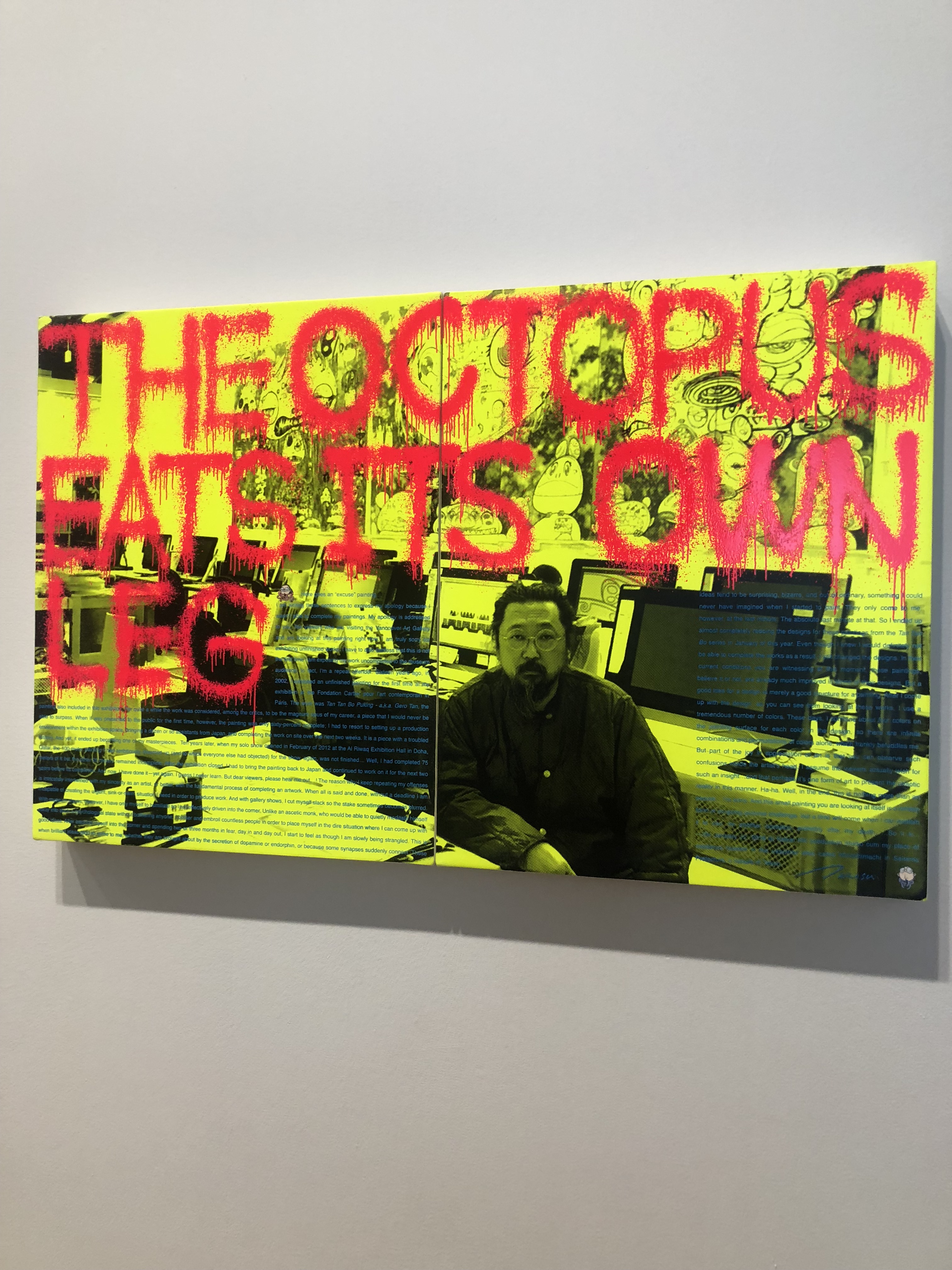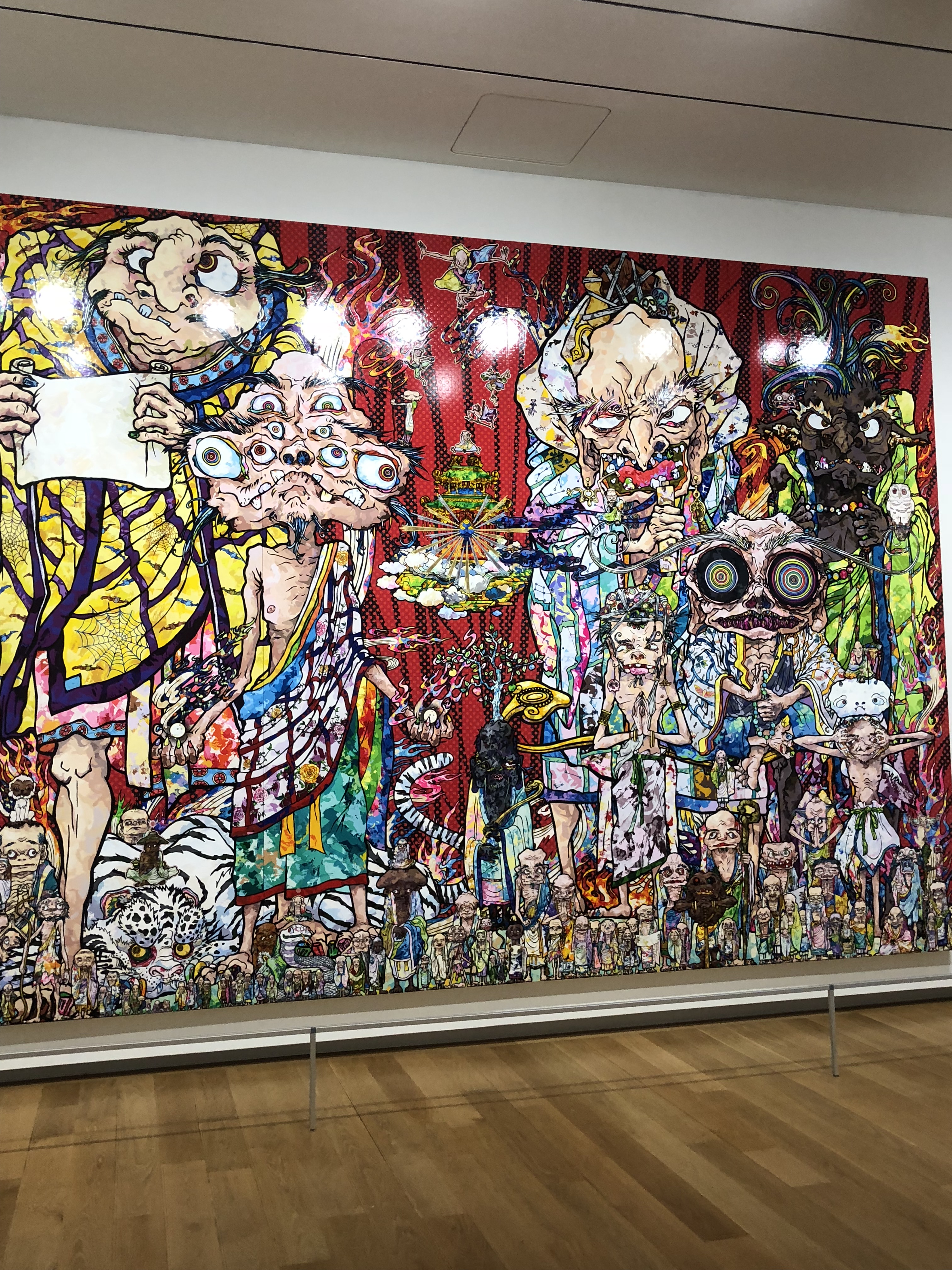


If you are in the DFW area, make haste to visit the Modern Art Museum of Fort Worth to see the exhibition, titled Takashi Murakami: The Octopus Eats Its Own Leg
Murakami’s Art and STEM:
“But I work with computers, and I work with assistants, and the way I create the work constantly evolves. Especially in the past few years, we’ve been able to use a lot of the 3D modeling programs, so the way I can grasp and understand forms has drastically changed and evolved.” (from an interview with renowned Japanese artist Takashi Murakami). Murakami’s super flat movement raises lots of questions about the nature of and relationships between art, consumerism, pop-art, comics, etc. Read this for some background.
Flattening of STEAM worlds and identity:
Another interesting line of questioning for me is whether there is also a flattening, compression, or deep interrelatedness between Art and fields such as Technology, Engineering (which in turn are deeply connected to the Science and Mathematics that were involved in the creation of tech products and processes). If there is, how does that affect our identity as a creative being (whether we practice in contexts oficially labelled as “Art”, “Science”, “Engineering”, “Business”, or other)?
walkSTEM as an interdisciplinary (flattened) movement and mindfulness:
The premise of talkSTEM activities including the #walkSTEM movement is that the world around us is rich in a wide array of STEAM phenomena and observing, questioning, and wondering about them is a fascinating practice open to all of us. Appreciating the connectedness of fields of study while still using tools and language developed by specific areas such as mathematics allows us to zoom in and out of different worlds while making meaningful connections. It also is a great way to practice mindfulness. If you’ve been on a walkSTEM tour of the Dallas Arts District, Dallas Arboretum, Dallas City Hall Plaza, NorthPark Center or our other sites, I’d love to hear your thoughts! You can go on a virtual walking tour of some of these sites by visiting walkSTEM Academy, our youtube channel. Try your hand at creating a walkSTEM stop (which can be absolutely anywhere). The first and most important phase of development of a stop for the walkSTEM team is observation and questioning. Each individual has to do this on their own for a while before we share our brainstormed questions (with absolutely no agendas or judgements) with each other and go further.This process is refreshing and (for me) meditative. I’d love to hear about your experience and perspective if you try this out.


Ryoan-ji Temple in Kyoto and STEM:
Although Murakami’s work is very modern and quite different from Zen rock gardens and quiet tea ceremonies, his deep knowledge of Japanese art and his deliberate intersections of the ancient, the modern, and other concepts and events reminded me of a few different experiences I had very recently had in Japan, such as the rock garden in Ryoan-ji Temple in Kyoto, visited by over a million people each year. The garden is about the size of a tennis court and is “designed to invoke deep meditation” like other Zen Buddhist landscapes (from this article in Smithsonian Magazine). Here is some great background from Khan Academy.
A 2002 scientific research study suggests that the power of the Ryoan-ji rock garden in invoking deep meditation is related to the design which is in turn related to a tree in our subconscious: “Using symmetry calculations the researchers have discovered that the objects imply an image of a tree in the empty space between them that we detect, without being aware of doing so.” (read more in this Nature article).
Japanese life, mindfulness and STEM:
Other ways that the Japanese practice mindfulness, meditation, purposeful awareness, or whatever you’d like to call it kept coming up during my recent 5- day visit (definitely will be going back!). For example, conductors of the sleek bullet trains speak out loud to themselves, following the shisa kanko (checking and calling system). A 1994 study by Japan’s Railway Technical Research Institute, cited in The Japan Times, showed that when asked to perform a simple task workers typically make 2.38 mistakes per 100 actions. When using shisa kanko, this number reduced to just 0.38 – a massive 85% drop (from this BBC article).
Whether it’s tea ceremonies, origami, bonsai sculpting, bathing – the Japanese people seem to have found a range of strategies designed to get people to be present and to be mindful – and not necessarily to cut themselves off from a busy life! I am eager to find ways to integrate Japanese mindfulness in my everyday life and while all this is fresh in my mind, I just bought a copy of the international bestseller, Ikigai: The Japanese Secret to a Long and Happy Life Why not pick up some extra tips, I am thinking??
The Center for Brain Health has a new Brain Performance Institute here in Dallas which offers a range of scientifically based programs, including a mindfulness program. Practicing mindfulness has “the ability to change physiological responses to stress, improve focused attention, promote cognitive resilience, improve physical and neural health, positively impact sleep, mood, and life satisfaction, and improve cognitive performance.” Observing and inquiring about the STEAM around us may help us practice mindfulness. I hope you’ll try it and let me know about your experiences.

















1 comment